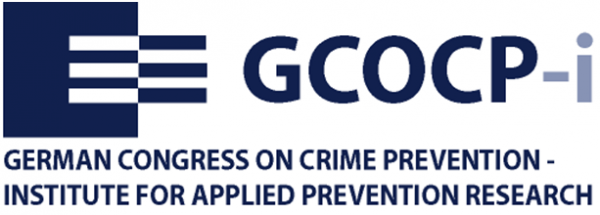
CVE´17 / PV&E ´17
International Conference
16.-18. June 2017
Hannover Congress Centrum
Conference Organization
GCOCP-i
NZK
Countering Violent Extremism: Building an evidence-base for the prevention of radicalization and violent extremism
The prevention of radicalization and violent extremism ranks high on the international political agenda, but our understanding about the impact of preventive programs and measures is still limited.
To reduce the threat of terrorism and political violence effectively and through proven practices, policy makers and practitioners need a reliable evidence base. Rigorous evaluation is also crucial for political accountability as public spending grows together with concerns about the effectiveness of these programs. Consequently, we need to know whether the actions taken have the desired effect because it consumes precious times of various professional groups to implement and deliver preventive measures. We therefore need a better evidence base to see whether social interventions - may it be in school, in the community or in prison - are worth our efforts.
The conference took place on June 16-18, 2017 at the Hannover Congress Centre - HCC (Germany). It brought together selected researchers, practitioners and policy makers with the goal:
- To debate the virtues of “evidence-base practises” in the context of radicalisation and violent extremism.
- To discuss the right balance between necessary pragmatism and scientific rigor.
- To share and identify metrics, benchmarks and indicators for (transferrable) good practices of violent extremism prevention.
- To identify and build technical expertise in evaluating counter-radicalization practices.
- To give room for informal dialogues among the participants.
June 16, 2017
DINNER
June 17, 2017
WELCOME ADDRESS


OPENING
PANEL I: How to become a jihadi and how to prevent it

“The (Salafi) networks became smaller and more clandestine … These people become radicalized within a very short-period of time … Contacts to known militants, suspicious online behavior as well as positive statements with regard to jihadist groups are more credible signals for a radicalization process (than outer appearance).”
Hazim Fouad State Office for the Protection of the Institution of Bremen
“Given the shortcomings of radicalization theories, several scholars … posit that religious conversion theories might be better suited than radicalization models for explaining why people join the jihadist movement. Specifically, … the most well-known new religious movement conversion theory— John Lofland and Rodney Stark’s ‘World Saver’ model— might be applicable to radicalization. … Initial findings (appear to be) largely congruent with the process (described in the) ‘World Saver’ model.”
Scott Kleinmann Jane´s Aerospace, Defense and Security
“The argument advanced here is that containing the majority of a jihadist scene of sympathizers, supporters and activists necessitate a twofold approach: 1. Bigger credit should be given to the social environment of Islamist terrorist groups, lone actors or foreign fighters in Germany …; 2. To keep in mind the danger of counterproductive effects in reaction to perceived radicalization (co-radicalization) it is necessary to develop a self-reflexive approach, considering the role and interdependency of different actors … .”
Klaus Hummel Saxon State Office of Criminal Investigation
T “IS terrorists tend to have little religious or ideological knowledge, a short radicalization process, are usually not middle class and often with criminal backgrounds. In spite of these apparent differences, the underlying rational logic of turning to terrorism, however, remains the same and it rests on individual choices reflecting the assessment of personal benefits in the context of opportunity structures.”
Daniela Pisoiu Institute for Peace Research and Security Policy - IFSH, University of Hamburg
“(When) discussing the evolution in al-Qaeda´s thinking, the following aspects are essential: How al-Qaeda attempted to correct the jihad to make it sustainable over time. How they learned the lessons of past failures in Algeria, Afghanistan, Saudi Arabia and Iraq. How they discussed these issues theoretically late last decade, and how they attempted to implement these over the past six years.”
Aaron Zelin The Washington Institute for Near East Policy
PANEL II: What to prevent? Extremist behavior, extremist ideas, or both?

“The focus on preventing extremist behavior is because a) there is no clear direct causal connection between the engagement in extremist ideas and extremist behavior, b) disengagement and prevention of extremist behavior can be hindered and made counterproductive by pushing for ideational change or targeting a ‘suspect community’.”
Gordon Clubb School of Politics and International Studies, University of Leeds
“Added to unresolved problems within the ‘Prevent’ policy, the perceived growth of extremism, which is recognized as a social ill whether as a forerunner to terrorism or not, fostered the additional policy discourse of ‘Counter Extremism’.”
Professor Clive Walker School of Law, University of Leeds
“Ideology and extremist narratives. These factors are the very glue that binds the engineer to the petty criminal, which justifies and calls for violence and mass atrocities in the name of an extremist interpretation of Islam.”
Alexander Ritzmann European Foundation for Democracy
“It is not sufficient to solely counter ideas because once extremist ideas have spread amongst a certain community the window for rational arguments closes rapidly. A strong repression strategy and empowering local pro-democracy activists should take place. Government institutions should furthermore analyze the affected social room and address possible specific issues in that area for mid- and long-term stabilization.”
Behnam Said State Office for the Protection of the Institution of Hamburg
PANEL III: What works? The virtue of evidence-based practices

“A social development strategy for adolescents as a foundation for an effective ‘Community That Cares Prevention Coalition Model’ consists of three key characteristics: 1. Opportunities to engage in education, work, social groups or volunteer activities; 2. Means to enable them to learn skills to take advantage of these opportunities; 3. Recognition - for example hearing they have done a great job by peers. When these are in place bounding of development and context is the result, for example peer-group context or community context. As these environments provide clear standards, the more likely is a transition to desired behaviors.”
Stephanie Bradley Evidence-based Prevention and Intervention Support Center – EPIS, Pennsylvania State University
“Evidence-based approaches on prevention include not only systematic and high-quality evaluations but also the consideration of social science and developmental research for designing programs and prevention measures. … This includes for example a scientific deduction of program content from risk and protective factors of radicalization, a use of age and target group appropriate prevention methods as well as a realistic concept of large-scale implementation.”
Andreas Beelmann Institute of Psychology, Department of Research Synthesis, Intervention and Evaluation, University of Jena
“We almost entirely lack the knowledge about the prospective risk factors in childhood and early adolescence that are associated with attitudes in support of violent extremism in late adolescence. I will use data from a large longitudinal survey to examine the extent to which extremist attitudes can be predicted an early age [and also] to which developmental risk for extremist attitudes differ from risk factors for general violent beliefs and behaviors.”
Manuel Eisner Institute for Criminology, University of Cambridge
“There has been progress in terrorism studies: first, there is broad consensus regarding the virtue of evidence-based practices; second, these investments have yielded substantive advances over time, including some convergence in accounts of the causes of terrorism; third, given the indeterminacy of models to explain terrorism, there is a livelier, more self-conscious effort to debate how to study terrorism, and; fourth, acknowledging that a definitive answer to the ‘what works?’ question is likely elusive. Alongside, four key challenges (have to be considered): first, we should be clear-eyed about potential and actual bias in terrorism research; second, there remains too much conceptual dissonance in the field; third, there are several notable gaps in the field; broadening and deepening the evidence base remains a key priority; fourth, it remains unclear whether and to what extent advances in understanding terrorism have effectively translated into policy … .”
Peter Romaniuk Global Center on Cooperative Security
PANEL IV: Where do we stand? Strengths and weaknesses of existing evaluation metrics

“Many delivering organizations are ill-equipped to measure or evaluate their CVE successes or otherwise.”
Tahir Abbas Royal United Services Institute for Defense and Security Studies
“The idea is to have research directly informing the work of the other sections of the center (such as training and intervention) … My mission was to think about how we can better implement what we want to implement.”
Benjamin Ducol CPRLV - Center for the Prevention of Radicalization Leading to Violence
“In criminology there is a good evidence base on showing that technically well-built programs regarding structural integrity, meaning training of staff, risk assessment protocols, program design ..., you can measure easily and you can show that a well-built program has a higher chance of impact.”
Daniel Koehler KPEBW - Competence Center for the Coordination of the Prevention Network against (Islamist) Extremism in Baden-Wuerttemberg
“A growing number of CVE program evaluations are available that provide short and medium term outcome metrics …A more challenging question is to develop appropriate long term metrics for CVE.”
Susan Szmania US Department of Homeland Security
PANEL V: What characterizes „best practices“? The design and criteria of (successful) programs of CVE

“The most credible counter narrative in CVE is that developed, not by states, but by jihadis who are competing with other jihadis over the ‘legitimate’ Islamic space.”
Nelly Lahoud International Institute for Strategic Studies - Middle East
“Criteria for ‘good practices’ include (1) an overall assessment of social and political issues that may contribute to the radicalization process, (2) a definition of concrete goals that should be achieved, and (3) a clear vision of how the program is linked to other programs in the field.”
Götz Nordbruch Ufuq e.V.
“Evaluation does not take place in a vacuum. Therefore, the aims of a program should be stated explicitly and broken down into measurable units. All relevant stakeholders must be included in the design of the program in order to support transparency and mutual respect. Each stakeholder involved should know what they are supposed to do, how they should do it, and why.”
Milena Uhlman Federal Office for Migration and Refugees
“Re-integration programs for extremist offenders are sometimes perceived as a soft option where people get a second chance instead of remaining in custody. However, they are a relevant and pragmatic approach since every offender will be released at some point in time, and the aim is to keep recidivism rates as low as possible.”
Baart Schuman Institute of Security and Global Affairs, Leiden University
“The most successful component in the program is continuity. A rather large group of different persons are involved in the re-integration process and most appreciated by the offenders are the regular meetings with the probation officers who meet with them on a weekly basis over a prolonged period of time.”
Liesbeth van der Heide Institute of Security and Global Affairs, Leiden University
PANEL VI: How to prevent violent extremism online? Digital possibilities and specificities of CVE

“Propaganda is specifically designed to target youngsters, using youth-oriented layout and language as well as incorporating everyday life issues and topics young people are interested in.”
Steffen Eisentraut jugendschutz.net
“I was an extremist, I went through this radicalization period for six years … We talk about narratives, and we ask: What works and what doesn’t work? Well, what have we tried?”
Mubin Shaikh government-level expert
“We need to identify individuals requiring interventions based upon their online behaviors rather than focusing on large counter narrative campaigns. We must refocus on the personal because this is what the recruiters do.”
Craig McCann Moonshot CVE
“Artistic expression creates individualism … which goes against what the Jihadis stand for with their totalitarian collective ideology … We can promote individualism and individual forms of protest and self-expression that go against the totalitarian jihadi narrative.”
Asiem Al-Difraoui Institute for Media and Communication Politics





